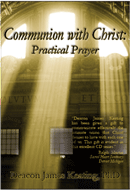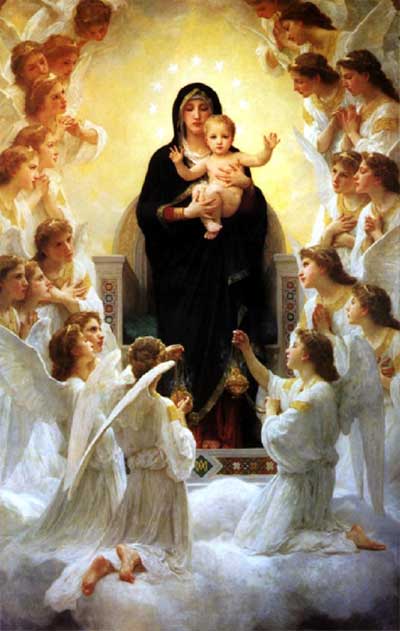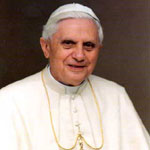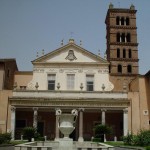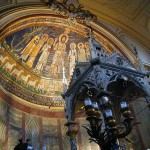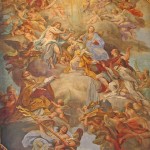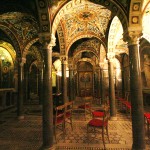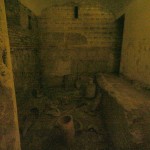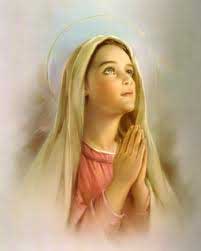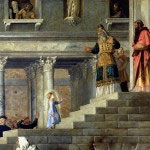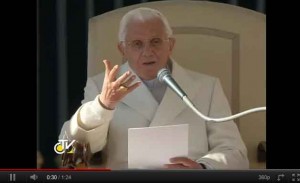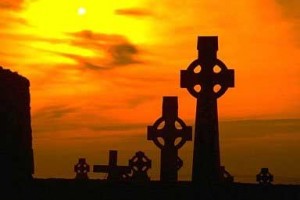Episode 8 – Communion with Christ – Practical Prayer – The “wellsprings”   where Christ awaits us.  Responding at the moment when the subtle interior movements of the Holy Spirit calls to us.  The Word of God becomes a place of encounter. The danger of  Scripture  becoming all academic. People are converted when the Word approaches them as living.  The liturgy is also a place of encounter.  The heart as an “altar” in the liturgy.
 where Christ awaits us.  Responding at the moment when the subtle interior movements of the Holy Spirit calls to us.  The Word of God becomes a place of encounter. The danger of  Scripture  becoming all academic. People are converted when the Word approaches them as living.  The liturgy is also a place of encounter.  The heart as an “altar” in the liturgy.
[powerpress]
Deacon James Keating, PhD, the director of Theological Formation for the Institute for Priestly Formation, located at Creighton University, in Omaha.
 From the Catechism of the Catholic Church paragraph 2652 and 2655
From the Catechism of the Catholic Church paragraph 2652 and 2655
2652 The Holy Spirit is the living water “welling up to eternal life”3Â in the heart that prays. It is he who teaches us to accept it at its source: Christ. Indeed in the Christian life there are several wellsprings where Christ awaits us to enable us to drink of the Holy Spirit.
2655 In the sacramental liturgy of the Church, the mission of Christ and of the Holy Spirit proclaims, makes present, and communicates the mystery of salvation, which is continued in the heart that prays. the spiritual writers sometimes compare the heart to an altar. Prayer internalizes and assimilates the liturgy during and after its celebration. Even when it is lived out “in secret,”6Â prayer is always prayer of the Church; it is a communion with the Holy Trinity.7
For more information on the “Institute of Priestly Formation†and for other material available by Deacon Keating, just click here
Don’t forget to pickup a copy of “Communion with Christ†, it is one of the best audio sets on prayer…ever!
Check out Deacon Keating’s “Discerning Heart†page
Tags: catholic, catholic podcast, catholic prayer, cathollc spirituality, creighton university, institute for priestly formation, liturgy, mass, prayer, scripture
This entry was posted on Thursday, December 22nd, 2011 at 7:36 am
You can follow any responses to this entry through the RSS 2.0 feed.
VATICAN CITY, 14 DEC 2011 (VIS) –
In his general audience this morning, the Holy Father dedicated his catechesis to Jesus’ prayer in the context of His healing miracles, focusing particularly on the healing of the deaf man as narrated in the Gospel of St. Mark, and the raising of Lazarus.
The healing of the deaf man “demonstrates that the cures worked by Jesus were connected with the intensity of His relationships, both with others and with the Father”, the Pope said. “With a gesture the Lord touches the sick man’s ears and tongue; that is, the sites of his infirmity. … But the central point of the episode lies in the fact that Jesus, at the very moment He works the cure, directly seeks
His relationship with the Father”, by looking up to heaven. “The narrative shows, then, that human involvement with the sick man led Jesus into prayer. His unique relationship with the Father emerges once again, His identity as Only-begotten Son. In Him, through His person, the healing and beneficial action of God is made present among us”.
The raising of Lazarus also highlights this aspect of Jesus’ dual relationships, His concern for a suffering friend and His filial bond with the Father. “His sincere affection for His friend … is expressed by the fact that Jesus was deeply moved at the sight of the suffering of Martha and Mary, and of all Lazarus’ friends, and in His profoundly human tears as he approaches the grave”, the Pope explained. At the same time, Christ interprets His friend’s death “in relation to His own identity and mission, and the glorification awaiting Him. When He hears news of Lazarus sickness, He says: ‘this illness does not lead to death: rather it is for God’s glory, so that the Son of God may be glorified through it'”.
“The moment when Jesus prays directly to the Father before the tomb is the natural climax of the entire episode”. According to John the Evangelist “Jesus looked upward and said, Father I thank you for having heard me”. This phrase, Benedict XVI explained, “shows us that Jesus had not for a moment ceased His prayer for Lazarus’ life. That prayer was continuous, indeed it strengthened Jesus’ bond with His friend and, at the same time, confirmed His decision to remain in communion with the will of the Father, with His plan of love in which the sickness and death of Lazarus is the place in which the glory of God is made manifest”.
Trusting in God’s will
These episodes, said the Holy Father, help us to understand “that when we ask the Lord for something in prayer, we must not expect an immediate fulfilment of our requests, of our will; rather, we should entrust outsides to the will of the Father, reading events in the perspective of His glory, of His plan of love which is often a mystery to our eyes. Thus in our prayer, request, praise and thanksgiving should fuse together, even when it seems to us that God does not respond to our expectations. Abandoning ourselves to the love of God, which always precedes and accompanies us, is a fundamental principle in our dialogue with Him. … Beyond anything that God may give us when we invoke Him, the greatest gift He can give us is His friendship, His presence, His love”. The
giver is more precious than the gift.
“The concern Jesus, true God and true man, feels for others, especially the needy and suffering, … causes Him to turn to the Father. … But the opposite is also true: communion with the Father, constant dialogue with Him, causes Jesus to be attentive to the real-life situations of man, to which He brings the consolation and love of God”.
This profound bond between love for God and love for others must, the Pope concluded, also be part of our own prayers, which “open the door to God, teaching us how to abandon our own selves in order to come close to others, especially in moments of trial, bringing them consolation, hope and light”.
At the end of his catechesis the Holy Father spoke in various languages to greet the more than 7,000 pilgrims gathered in the Paul VI Hall. He expressed his particular appreciation to the people who had contributed to the restoration of the sculpture of “The Resurrection” by Pericle Fazzini, which adorns the Hall. “Following a period of painstaking efforts”, he said, “today we have the joy of being able to admire this work of art and faith in all its original splendour”.
Speaking then in Spanish, Benedict XVI addressed a delegation from the Mexican state of Puebla, expressing the hope that, “with God’s help, I will soon be able to visit you in your country”.
Tags: catholic, catholic podcast, catholic prayer, cathollc spirituality, pope benedict xvi, prayer
This entry was posted on Wednesday, December 14th, 2011 at 7:42 am
You can follow any responses to this entry through the RSS 2.0 feed.
Episode 6- Communion with Christ – Practical Prayer – How we receive prayer.  The reception of grace and the great gift of memory. “Ask…seek…knock “.  Through prayer, heaven begins. Prayer is a battle…it isn’t easy.  Western culture is a “culture of distraction”.  We need to receive the coming of God when it enlights upon us.
How we receive prayer.  The reception of grace and the great gift of memory. “Ask…seek…knock “.  Through prayer, heaven begins. Prayer is a battle…it isn’t easy.  Western culture is a “culture of distraction”.  We need to receive the coming of God when it enlights upon us.
[powerpress]
Deacon James Keating, PhD, the director of Theological Formation for the Institute for Priestly Formation, located at Creighton University, in Omaha.
 From the Catechism of the Catholic Church paragraph 2610and 2611
From the Catechism of the Catholic Church paragraph 2610and 2611
2610 Just as Jesus prays to the Father and gives thanks before receiving his gifts, so he teaches us filial boldness: “Whatever you ask in prayer, believe that you receive it, and you will.”66Â Such is the power of prayer and of faith that does not doubt: “all things are possible to him who believes.”67Â Jesus is as saddened by the “lack of faith” of his own neighbors and the “little faith” of his own disciples68Â as he is struck with admiration at the great faith of the Roman centurion and the Canaanite woman.69
2611 The prayer of faith consists not only in saying “Lord, Lord,” but in disposing the heart to do the will of the Father.70Â Jesus calls his disciples to bring into their prayer this concern for cooperating with the divine plan.71
2612 In Jesus “the Kingdom of God is at hand.”72Â He calls his hearers to conversion and faith, but also to watchfulness. In prayer the disciple keeps watch, attentive to Him Who Is and Him Who Comes, in memory of his first coming in the lowliness of the flesh, and in the hope of his second coming in glory.73Â In communion with their Master, the disciples’ prayer is a battle; only by keeping watch in prayer can one avoid falling into temptation.74
For more information on the “Institute of Priestly Formation†and for other material available by Deacon Keating, just click here
Don’t forget to pickup a copy of “Communion with Christ†, it is one of the best audio sets on prayer…ever!
Check out Deacon Keating’s “Discerning Heart†page
Tags: catholic, catholic podcast, catholic prayer, cathollc spirituality, creighton university, Deacon James Keating, Deacon Keating, institute for priestly formation, institute of priestly formation, james keating, prayer, theological formation
This entry was posted on Saturday, December 10th, 2011 at 1:43 am
You can follow any responses to this entry through the RSS 2.0 feed.
Hail Holy Queen, Mother of mercy
[Hail] our life, our sweetness and our hope!
To thee do we cry, poor banished chidren of Eve,
To thee do we send up our sighs,
Mourning and weeping in this valley of tears.
Turn, then, o most gracious advocate,
Thine eyes of mercy and after this our exile
Show unto us the blessed fruit of thy womb, Jesus.
O clement, o loving, o sweet Virgin Mary.
 Â Latin text
 Latin text
Salve Regina, Mater Misericordiae,
Vita, dulcedo, et spes nostra, Salve!
Ad te clamamus, exsules filii [H]evae,
Ad te suspiramus, gementes et flentes,
In hac lacrimarum valle.
Eja ergo, Advocata nostra,
Illos tuos misericordes oculos ad nos converte
Et Jesum, benedictum fructum ventris tui,
Nobis, post hoc exilium, ostende,
O clemens, O pia, O dulcis Virgo Maria. (more…)
Tags: catholic, catholic podcast, catholic prayer, cathollc spirituality, English translation, French translation, hail holy queen, hymn, Jesus, mercy, prayer, salve regina, translation
This entry was posted on Wednesday, December 7th, 2011 at 9:41 pm
You can follow any responses to this entry through the RSS 2.0 feed.
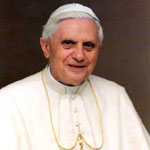 VATICAN CITY, 7 DEC 2911 (VIS) –
VATICAN CITY, 7 DEC 2911 (VIS) –
Benedict XVI dedicated the catechesis of today’s Wednesday audience, celebrated in the Vatican’s Paul VI Hall, to the Messianic Hymn of Jubilee, Jesus’ prayer of praise recorded in the Gospels of Matthew and Luke, which constitutes the “apex of a path of prayer in which Jesus’ profound and intimate communion with the Father in the Holy Spirit and His divine filiation clearly emerges “.
Already at the opening of the hymn, the Pope observed, Jesus addresses God by calling him Father, a term that expresses “Jesus’ awareness and certainty of being ‘the Son’ in close and constant communion with Him. This is the central point and the source of Jesus’ every prayer. … The name of ‘Father’ is followed by a second title: ‘Lord of heaven and earth'”, which “recalls the great biblical narration of the history of God’s love for human beings that began with creation. Jesus … is the pinnacle and the fullness of this history of love. … Through the expression ‘Lord of heaven and earth’ we also recognize how, in Jesus, the one who reveals the Father, the possibility of access to God is opened to humanity”.
But, to whom does the Son want to reveal the mysteries of God? “Divine revelation”, the pontiff explained, “does not occur within earthly logic, according to which humans are the wise and powerful who posses important knowledge and transmit it to those who are more simple. … God’s
style is another: His communication is addressed precisely to the ‘childlike’. … And what is this childlikeness that opens humans to a filial intimacy with God and to welcoming His will? … It is the pureness of heart that allows us to recognize the face of God in Jesus Christ. It is keeping our hearts as simple as those of children, without the presumptions of those who are locked in themselves, thinking they have no need of anyone, not even God”.
“In Matthew’s Gospel, after the Hymn of Jubilee, we encounter one of Jesus’ most moving pleas: ‘Come to me, all you who labor and are burdened, and I will give you rest.’ Jesus asks that we go to Him, the true wisdom, to the one who is ‘meek and humble of heart’; He proposes His ‘yoke’, the path of evangelical wisdom, which is neither a doctrine to learn nor an ethical proposal, but rather a Person to follow: He himself, the only-begotten Son, in perfect communion with the Father”.
“We also can address God with the confidence of sons and daughters”, Benedict XVI concluded, “calling Him Father when we pray. But we have to keep the heart of a child, the heart of those ‘poor in spirit’, in order to recognize that we are not self-sufficient … that we need God, that we have to seek Him, listen to Him, speak to Him. Prayer opens us to receiving the gift of God, His wisdom who is Jesus himself, in order to accept the will of the Father in our lives and to find consolation in the weariness of our journey”.
At the end of the audience, Benedict XVI greeted the pilgrims present in the hall in their various languages and noted that the Solemnity of the Immaculate Conception, which is celebrated tomorrow, “reminds us of Mary’s singular acceptance of God’s salvific plan. Preserved from any stain of sin in order to be the holy dwelling place of the Incarnate Word, she always trusted fully in the Lord”. The Pope especially urged the youth to make the effort to imitate the Virgin “with pure and clean hearts, letting yourselves be shaped by God who, in you as well, desires to bring about ‘great things'”.
Tags: catholic, catholic podcast, catholic prayer, cathollc spirituality, pope benedict xvi, prayer
This entry was posted on Wednesday, December 7th, 2011 at 9:13 am
You can follow any responses to this entry through the RSS 2.0 feed.
Episode 5- Communion with Christ – Practical Prayer –  ” How did I ever live without prayer?”   A sustained communion with Christ is the beginning of heaven.  “Ask..seek…knock”.  Are you knocking to receive a relationship or are you knocking to get more stuff?  Are you seeking to surrender and entrust or are you seeking to satisfy more of a passing  desire or mood?  Even in our coming to prayer Jesus wants to purify our motive for doing so.  The challenge of entering into deep prayer which leads to the great maturity of prayer.
 A sustained communion with Christ is the beginning of heaven.  “Ask..seek…knock”.  Are you knocking to receive a relationship or are you knocking to get more stuff?  Are you seeking to surrender and entrust or are you seeking to satisfy more of a passing  desire or mood?  Even in our coming to prayer Jesus wants to purify our motive for doing so.  The challenge of entering into deep prayer which leads to the great maturity of prayer.
[powerpress]
Deacon James Keating, PhD, the director of Theological Formation for the Institute for Priestly Formation, located at Creighton University, in Omaha.
 From the Catechism of the Catholic Church paragraph 2608 and 2609
From the Catechism of the Catholic Church paragraph 2608 and 2609
2608 From the Sermon on the Mount onwards, Jesus insists on conversion of heart: reconciliation with one’s brother before presenting an offering on the altar, love of enemies, and prayer for persecutors, prayer to the Father in secret, not heaping up empty phrases, prayerful forgiveness from the depths of the heart, purity of heart, and seeking the Kingdom before all else.64Â This filial conversion is entirely directed to the Father.
2609 Once committed to conversion, the heart learns to pray in faith. Faith is a filial adherence to God beyond what we feel and understand. It is possible because the beloved Son gives us access to the Father. He can ask us to “seek” and to “knock,” since he himself is the door and the way.65
For more information on the “Institute of Priestly Formation†and for other material available by Deacon Keating, just click here
Don’t forget to pickup a copy of “Communion with Christ†, it is one of the best audio sets on prayer…ever!
Check out Deacon Keating’s “Discerning Heart†page
Tags: catholic, catholic podcast, catholic prayer, cathollc spirituality, creighton university, Deacon Keating, institute for priestly formation, james keating, prayer, prayer Jesus, theological formation
This entry was posted on Thursday, December 1st, 2011 at 6:29 am
You can follow any responses to this entry through the RSS 2.0 feed.
VATICAN CITY, 30 NOV 2011 (VIS) – This morning’s general audience was celebrated in the Paul VI Hall in the presence of 5,500 faithful. Having recently completed a series of catecheses dedicated to prayer in the Old Testament, the Pope today began a new cycle on the subject of the prayer of Christ which, he said, was “like a hidden canal irrigating His life, relationships and actions, and guiding Him with increasing firmness to the total gift of self, in keeping with the loving plan of God the Father”.
One particularly significant moment of prayer followed the Baptism of Jesus in the Jordan. This, the Pope noted, poses a query as to why Jesus, Who was without sin, should have chosen to submit Himself to John’s Baptism of penance and conversion. John the Baptist himself raised the question, saying “I need to be baptised by you, and do you come to me?”. The Holy Father explained how “by emerging Himself in the Jordan River, Jesus … expressed His solidarity with people who recognise their sins, who chose to repent and change their lives. He helps us to understand that being part of the people of God means entering into a new life, a life in conformity with God. By this gesture Jesus anticipated the cross, beginning His active life by taking the place of sinners, bearing the weight of the sin of all humankind on His shoulders”.
By praying after His Baptism, Jesus demonstrates His intimate bond with the Father, “experiencing His paternity and apprehending the demanding beauty of His love. Speaking to God, Jesus receives confirmation of His mission”, with the words that resound from on high: “This is my son, the Beloved” and with the descent of the Holy Spirit upon Him. “Through prayer”, the Pope said, “Jesus lives in uninterrupted contact with the Father in order to achieve His project of love for mankind”. It is in this profound union with the Father that Jesus made the move for the hidden life of Nazareth to His public ministry. (more…)
Tags: catholic, catholic podcast, catholic prayer, cathollc spirituality, pope benedict xvi, prayer
This entry was posted on Wednesday, November 30th, 2011 at 7:49 am
You can follow any responses to this entry through the RSS 2.0 feed.
St. Cecilia, her story is an extraordinary one of faithulness and commitment. Some would have you believe it was all “legend”, but the discovery of her incorrupt body in 1599 would bear otherwise. It seems to me the Lord is encouraging us to believe the witness of this courageous virgin martyr.
In St. Cecilia’s in Rome, Â I had one of the most peaceful and prayerful experiences while on pilgrimage to the “City of the Saints”.
It is said that Saint Cecilia was born of a patrician family in Rome and raised as a Christian. She wore a coarse horsehair garment beneath her clothes of rank, fasted, and vowed herself to God.
 Against her will she was married by her father to a young, pagan patrician named Valerian. While everyone sang and danced at their wedding, Cecilia sat apart, saying only the Psalms. Valerian turned out to be a man of great understanding. On their wedding night, she told Valerian, “I have an angel of God watching over me. If you touch me in the way of marriage, he will be angry and you will suffer. But if you respect my maidenhood, he will love you as he loves me.”
Against her will she was married by her father to a young, pagan patrician named Valerian. While everyone sang and danced at their wedding, Cecilia sat apart, saying only the Psalms. Valerian turned out to be a man of great understanding. On their wedding night, she told Valerian, “I have an angel of God watching over me. If you touch me in the way of marriage, he will be angry and you will suffer. But if you respect my maidenhood, he will love you as he loves me.”
Valerian replied, “Show me this angel.” She told him that if he believed in the living and one true God and was baptized, he would see the angel. Thus, she persuaded Valerian to respect her vow of virginity.
He was impressed and attracted by his wife’s Christian graces, and so Valerian was baptized by Pope Saint Urban (which would be c. 222-230). When he returned to Cecilia, he found her standing by the side of an angel as she promised. The angel told him: “I have a crown of flowers for each of you. They have been sent from paradise as a sign of the life you are both to lead. If you are faithful to God, He will reward you with the everlasting perfumes of heaven.”
The angel then crowned Cecilia with roses, and Valerian with a wreath of lilies. The delightful fragrance of the flowers filled the whole house. At this point Valerian’s brother, Tiburtius, appeared. He, too, was offered salvation if he would renounce false gods. Cecilia converted him, and he was baptized.
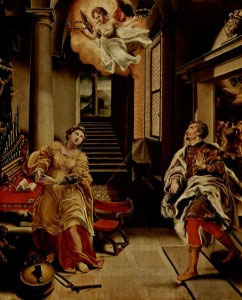 From that time the two young men dedicated themselves to good works. Because of their ardor in burying the bodies of martyred Christians, they were arrested. The prefect Almachius told them that if they would sacrifice to the gods, they could go free. They refused, and Valerian rejoiced when he was handed over to be scourged.
From that time the two young men dedicated themselves to good works. Because of their ardor in burying the bodies of martyred Christians, they were arrested. The prefect Almachius told them that if they would sacrifice to the gods, they could go free. They refused, and Valerian rejoiced when he was handed over to be scourged.
The prefect wanted to give them another chance, but his assessor warned him that they would simply use the interim to give away their possessions so that they couldn’t be confiscated. They were beheaded in Pagus Triopius, four miles from Rome. With them was an officer named Maximus, who had declared himself a Christian after witnessing their fortitude.
Cecilia buried the three and then decided to turn her home into a place of worship. Her religion was discovered and she herself asked to refute her faith. She converted those who were sent to convince her to sacrifice to the gods. When Pope Urban visited her at home, he baptized over 400 people.
In court, Almachius debated with her for some time. She was sentenced to be suffocated to death in the bathroom of her own house. The furnace was fed seven times its normal amount of fuel, but the steam and heat failed to stifle her. 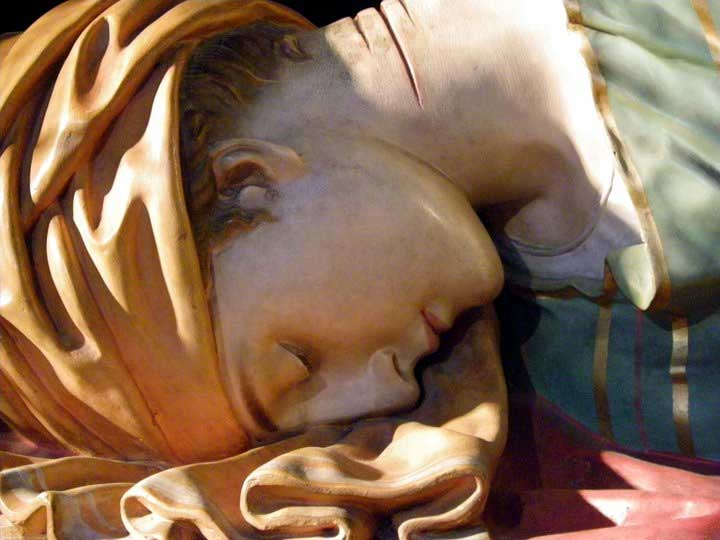 A soldier sent to behead her struck at her neck three times, and she was left dying on the floor. She lingered for three days, during which time the Christians thronged to her side, and she formally made over her house to Urban and committed her household to his care.
A soldier sent to behead her struck at her neck three times, and she was left dying on the floor. She lingered for three days, during which time the Christians thronged to her side, and she formally made over her house to Urban and committed her household to his care.
She was buried next to the papal crypt in the catacombs of Saint Callixtus. In 817, Pope Saint Paschal I discovered her grave, which had been concealed 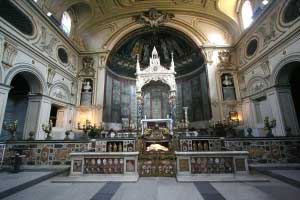 from the Lombard invader Aistulf in 756, and translated her body to beneath the main altar of what was later called the titulus Sanctae Caeciliae, which translates as “the church founded by a lady named Cecilia.” In 1599, during the renovation of the church, Cardinal Sfondrati opened her tomb and found her holy remains incorrupt. Even the green and gold of her rich robe had not been injured by time. Thousands had the privilege of seeing her in her coffin, and many have been blessed by miracles. The body disintegrated quickly after meeting with the air.
from the Lombard invader Aistulf in 756, and translated her body to beneath the main altar of what was later called the titulus Sanctae Caeciliae, which translates as “the church founded by a lady named Cecilia.” In 1599, during the renovation of the church, Cardinal Sfondrati opened her tomb and found her holy remains incorrupt. Even the green and gold of her rich robe had not been injured by time. Thousands had the privilege of seeing her in her coffin, and many have been blessed by miracles. The body disintegrated quickly after meeting with the air.
Under the high altar in Saint Cecilia’s Church is a beautiful marble statue by Maderna portraying the “martyr” bathed in her own blood as she fell after the stroke of the 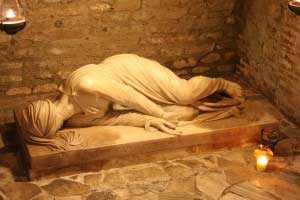 sword. A replica of this statue occupies the the original resting place of the saint in the catacomb of Callixtus. Other artists were allowed to paint pictures of her after her tomb was opened.
sword. A replica of this statue occupies the the original resting place of the saint in the catacomb of Callixtus. Other artists were allowed to paint pictures of her after her tomb was opened.
Until the middle ages, Pope Saint Gregory had been the patron of music and musicians, but when the Roman Academy of Music was established in 1584, it was put under the protection of Saint Cecilia; thus, her patronage of music originated. Dryden wrote a “Song for Saint Cecilia Day” and Pope an “Ode for Music on Saint Cecilia Day.”
Valerian, Tiburtius, and Maximus are historical characters; they were Roman martyrs, buried in the cemetery of Praetextatus, but nothing else is known of them. Her story was the basis for the Second Nun’s Tale in Chaucer’s Canterbury Tales.
St. Cecilia is regarded as the patroness of music [because of the story that she heard heavenly music in her heart when she was married], and is represented in art with an organ or organ-pipes in her hand.– From The Lives of the Saints by the Rev. S. Baring-Gould, M.A., published in 1914 in Edinburgh.
Dear Saint Cecilia, one thing we know for certain about you is that you became a heroic martyr in fidelity to your divine Bridegroom.
We do not know that you were a musician but we are told that you heard Angels sing.
Inspire musicians to gladden the hearts of people by filling the air with God’s gift of music and reminding them of the divine Musician who created all beauty.
Amen.
Tags: angel, catholic, catholic podcast, catholic prayer, cathollc spirituality, churches in rome, martyr, music, prayer, rome, st cecilia, valerian, virgin martyr, virginity
This entry was posted on Tuesday, November 22nd, 2011 at 12:32 am
You can follow any responses to this entry through the RSS 2.0 feed.
I love this feast day of the Blessed Virgin Mary!!!
The Presentation of the Blessed Virgin Mary (as it is known in the West), or The Entry of the Most Holy Theotokos into the Temple (its name in the East), is a liturgical feast celebrated by the Roman Catholic and Orthodox Churches.
wiki - The feast is associated with an event recounted not in the New Testament, but in the apocryphal
Infancy Narrative of James. According to that text, Mary’s parents, Joachim and Anne, who had been childless, received a heavenly message that they would bear a child. In thanksgiving for the gift of their daughter, they brought her, when still a child, to the Temple in Jerusalem to consecrate her to God. Mary remained in the Temple until puberty, at which point she was assigned to Joseph as guardian. Later versions of the story (such as the Gospel of Pseudo-Matthew and the Gospel of the Nativity of Mary) tell us that Mary was taken to the Temple at around the age of three in fulfillment of a vow.
The feast originated as a result of the dedication of the Basilica of Saint Mary the New, built in the year 543 by the Byzantines under Emperor Justinian I near the site of the ruined Temple in Jerusalem. Although this
basilica was destroyed by the Sassanid Persians under Khosrau II after the Siege of Jerusalem (614), the feast continued to be celebrated throughout the East. The feast was celebrated in the monasteries of Southern Italy by the ninth century and was later introduced into the Papal Chapel in Avignon in the year 1372 by a decree of Pope Gregory XI. Â It was included in the Roman Missal in 1472. But, as the fact of the “Presentation of the Blessed Virgin Mary” is only a pious belief, but not a defined matter of faith, it was suppressed by Pope Pius V in 1568. Â As a result, it did not appear in the Tridentine Calendar. Pope Sixtus V reintroduced it into the Roman Calendar in 1585. Pope Clement VIII made this feast a Greater Double in 1597. The
feast also continued as a memorial in the Roman Calendar of 1969.
Entry of the Most Holy Theotokos into the Temple (Russian icon, 16th century).The Eastern Orthodox Church celebrates it as one of its twelve Great Feasts on November 21 (for those churches which follow the Julian Calendar, November 21 falls on December 4 of the modern Gregorian Calendar). The first documented celebration of the feast in any calendar is the mention of the Εἴσοδος τῆς Παναγίας Θεοτόκου (Entry of the All-Holy Theotokos – i.e. into the Temple) in the 11th-century Menology of the Eastern Roman (also known as Byzantine) emperor Basil II. In the Orthodox Church the feast always falls during the Nativity Fast, and on the day of the feast the fasting rules are lessened somewhat so that fish, wine and oil may be eaten.
For the Roman Catholic Church, on the day of the Presentation of the Blessed Virgin Mary, “we celebrate that dedication of herself which Mary made to God from her very childhood under the inspiration of the Holy Spirit who filled her with grace at her Immaculate Conception.”
November 21 is also a “Pro Orantibus” Day, a day of prayer for cloistered religious “totally dedicated to God in prayer, silence and concealment.”
The Presentation in art
Western depictions usually focused on the lone figure of the young Mary climbing the steep steps of the Temple, having left her parents at the bottom, and climbing towards the Chief Priest and other Temple figures at the top of the steps. The Presentation was one of the usual scenes in larger cycles of the Life of the Virgin, although it was not usually one of the scenes shown in a Book of hours. – wiki
Collect: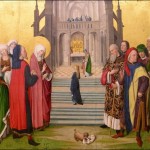
Eternal Father,
we honor the holiness and glory of the Virgin Mary.
May her prayers bring us
the fullness of your life and love.
We ask this through our Lord Jesus Christ, your Son, who
lives and reigns with You and the Holy Spirit,
one God, for ever and ever. Amen.
First Reading: Zechariah 2:14-17 (2:10-13 RSV)
Sing and rejoice, O daughter of Zion; for lo, I come and I will dwell in the midst of you, says the Lord. And many nations shall join themselves to the Lord in that day, and shall be My people; and I will dwell in the midst of you, and you shall know that the Lord of hosts has sent Me to you. And the Lord will inherit Judah as His portion in the holy land, and will again choose Jerusalem.”
Be silent, all flesh, before the Lord; for He has roused Himself from His holy dwelling.
Gospel Reading: Matthew 12:46-50
While He was still speaking to the people, behold, His mother and His brethren stood outside, asking to speak to Him. But He replied to the man who told Him, “Who is My mother, and who are My brethren?” And stretching out His hand toward His disciples, He said, “Here are My mother and My brethren! For whoever does the will of My Father in heaven is My brother, and sister, and mother.”
Tags: blessed virgin mary, catholic, catholic podcast, catholic prayer, cathollc spirituality, holy spirit, Holy Theotokos, prayer, presentation of the blessed virgin mary, Roman Catholic, silence, The Presentation of the Blessed Virgin Mary
This entry was posted on Monday, November 21st, 2011 at 12:07 am
You can follow any responses to this entry through the RSS 2.0 feed.
Episode 4- Communion with Christ – Practical Prayer –  Continued reflections on the last things said by Jesus on the Cross.   Mary as teacher of prayer…the wellspring of interiority, because she held all the mysteries in her heart. “I Thirst”….God’s longing for us.  Allowing God to pray in us.  “My God, My God, why have you forsaken me”…is it more that we have abandoned God?  Sin looks like crucifixion.  The final words.
 Mary as teacher of prayer…the wellspring of interiority, because she held all the mysteries in her heart. “I Thirst”….God’s longing for us.  Allowing God to pray in us.  “My God, My God, why have you forsaken me”…is it more that we have abandoned God?  Sin looks like crucifixion.  The final words.
[powerpress]
Deacon James Keating, PhD, the director of Theological Formation for the Institute for Priestly Formation, located at Creighton University, in Omaha.
 From the Catechism of the Catholic Church paragraph 2605
From the Catechism of the Catholic Church paragraph 2605
When the hour had come for him to fulfill the Father’s plan of love, Jesus allows a glimpse of the boundless depth of his filial prayer, not only before he freely delivered himself up (“Abba . . . not my will, but yours.”),53but even in his last words on the Cross, where prayer and the gift of self are but one: “Father, forgive them, for they know not what they do”,54 “Truly, I say to you, today you will be with me in Paradise”,55 “Woman, behold your son” – “Behold your mother”,56 “I thirst.”;57 “My God, My God, why have you forsaken me?”58 “It is finished”;59 “Father, into your hands I commit my spirit!”60 until the “loud cry” as he expires, giving up his spirit.61
For more information on the “Institute of Priestly Formation†and for other material available by Deacon Keating, just click here
Don’t forget to pickup a copy of “Communion with Christ†, it is one of the best audio sets on prayer…ever!
Check out Deacon Keating’s “Discerning Heart†page
Tags: catholic, catholic podcast, catholic prayer, cathollc spirituality, Deacon James Keating, Deacon Keating, institute for priestly formation, prayer, theological formation
This entry was posted on Saturday, November 19th, 2011 at 7:43 pm
You can follow any responses to this entry through the RSS 2.0 feed.
VATICAN CITY, 16 NOV 2011 (VIS) – During today’s general audience in St Peter’s Square, attended by over 11,000 pilgrims, the Holy Father imparted the final catechesis of his cycle dedicated to the Psalms. He focused on Psalm 110, which “Jesus Himself cited, and which the authors of the New Testament referred to widely and interpreted in reference to the Messiah. … It is a Psalm beloved by the ancient Church and by believers of all times”, which celebrates “the victorious and glorified Messiah seated at the right hand of God”.The Psalm begins with a solemn declaration: “The Lord says to my lord: ‘Sit at my right hand until I make your enemies your footstool”. Benedict XVI explained that “Christ is the Lord enthroned, the Son of man seated at the right hand of God. … He is the true king who by resurrection entered into glory, … higher than the angels, seated in the heavens over all other powers, … and with all His adversaries at His feet until the last enemy, death, is definitively defeated by Him”.God and the king celebrated in the Psalm are inseparably linked. “The two govern together, to the point that the Psalmist confirms that God Himself grants the regal sceptre, giving the king the task of defeating his adversaries. … The exercise of power is a task the king receivesdirectly from the Lord, a responsibility which involves dependence and obedience, thus becoming a sign to the people of God’s powerful and provident presence. Dominion over enemies, glory and victory are gifts the king has received, that make him a mediator of divine triumph over evil”.The priestly dimension, linked to that of regality, appears in verse four. “The Lord has sworn and will not change his mind ‘You are a priest forever, according to the order of Melchizedek'”. This priest, the king of Salem, had blessed Abraham and offered bread and wine following the victorious military campaign conducted by the patriarch to save Lot from the hands of his enemies. The king of the Psalm “will be a priest forever, mediator of the divine presence among His people, a catalyst for the blessing of God”. Jesus Christ “is the true and definitive priest, Who will complete and perfect the features of Melchizedek’s priesthood”. In the bread and wine of the Eucharist, Christ “offers Himself and, defeating death, brings life to all believers”.The final verses portray “the triumphant sovereign who, with the support of the Lord, having received power and glory from Him, opposes his enemies, defeating adversaries and judging nations”. (more…)
Tags: catholic, catholic podcast, catholic prayer, cathollc spirituality, pope benedict xvi, prayer, psalm 110, psalms
This entry was posted on Wednesday, November 16th, 2011 at 1:25 pm
You can follow any responses to this entry through the RSS 2.0 feed.
Episode 2-Communion with Christ – Practical Prayer –  We have lost are fear of going astray  and being unfaithful within.  We must be aware of the spirits, personal or impersonal, that can get into us.  We can get tangled up in many different  influences in prayer.  That is why it so important to have a director, a guide,  to help us navigate in this journey and to test those spirits.  Jesus is the model of prayer.  “He learns to pray from His mother”. (see below).   The witness of the community.  His prayer springs from a secret source and He wishes to share it with us.  All prayer is foretaste of heaven.
and being unfaithful within.  We must be aware of the spirits, personal or impersonal, that can get into us.  We can get tangled up in many different  influences in prayer.  That is why it so important to have a director, a guide,  to help us navigate in this journey and to test those spirits.  Jesus is the model of prayer.  “He learns to pray from His mother”. (see below).   The witness of the community.  His prayer springs from a secret source and He wishes to share it with us.  All prayer is foretaste of heaven.
[powerpress]
Deacon James Keating, PhD, the director of Theological Formation for the Institute for Priestly Formation, located at Creighton University, in Omaha.
 From the Catechism of the Catholic Church paragraph 2599
From the Catechism of the Catholic Church paragraph 2599
The Son of God who became Son of the Virgin learned to pray in his human heart. He learns to pray from his mother, who kept all the great things the Almighty had done and treasured them in her heart.41Â He learns to pray in the words and rhythms of the prayer of his people, in the synagogue at Nazareth and the Temple at Jerusalem. But his prayer springs from an otherwise secret source, as he intimates at the age of twelve: “I must be in my Father’s house.”42Â Here the newness of prayer in the fullness of time begins to be revealed: his filial prayer, which the Father awaits from his children, is finally going to be lived out by the only Son in his humanity, with and for men.
For more information on the “Institute of Priestly Formation†and for other material available by Deacon Keating, just click here
Don’t forget to pickup a copy of “Communion with Christ†, it is one of the best audio sets on prayer…ever!
Check out Deacon Keating’s “Discerning Heart†page
Tags: catholic, catholic podcast, catholic prayer, cathollc spirituality, Deacon James Keating, Deacon Keating, james keating, prayer, theological formation
This entry was posted on Thursday, November 3rd, 2011 at 11:20 am
You can follow any responses to this entry through the RSS 2.0 feed.
OK, First…Purgatory, it’s a good thing. While no one knows exactly (though various mystics have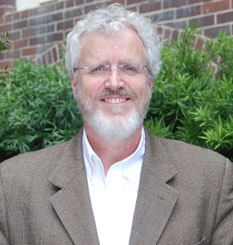 attempted to convey what they experienced by way of their prayer) what will happen there, we do know that if we end up in Purgatory we should be extremely happy since we are most definitely headed for heaven. No one in Purgatory is sent to hell (Yeah!).
attempted to convey what they experienced by way of their prayer) what will happen there, we do know that if we end up in Purgatory we should be extremely happy since we are most definitely headed for heaven. No one in Purgatory is sent to hell (Yeah!).
[powerpress]
First Stop in this exploration is to listen to Deacon James Keating of Institute for Priestly Foramtion with one of the best discussions Bruce and I ever had on the Poor Souls and Purgatory.
So what about praying for the Dead and what does the Church say about the Poor Souls?
What is Purgatory?
The Catechism of the Catholic Church defines Purgatory as follows:
1031 The Church gives the name Purgatory to this final purification of the elect, which is entirely different from the punishment of the damned. The Church formulated her doctrine of faith on Purgatory especially at the Councils of Florence and Trent. The tradition of the Church, by reference to certain texts of Scripture, speaks of a cleansing fire: As for certain lesser faults, we must believe that, before the Final Judgment, there is a purifying fire. He who is truth says that whoever utters blasphemy against the Holy Spirit will be pardoned neither in this age nor in the age to come. From this sentence we understand that certain offenses can be forgiven in this age, but certain others in the age to come (St. Gregory the Great, Dial. 4,39:PL 77,396; cf. Mt 12:31)..
.
.A “final purification” , hmm, sounds like suffering to me, The kind of interior suffering where we have to deal with the painful results of sin inflicted on us by others, but we also with the pain we have inflicted on others…and boy does that hurt. But in this “final purification” (it means just that…final) final healing occurs…an eternal, forever and forever amen, type of healing so we can be  “happy with God forever in Heaven” (to paraphrase the Baltimore Catechism).
The gift of this life here and now on earth is that we can enter into that “purification” now, so that when that moment comes (which we call…death), we can go right to the “pearly gates” and to heaven 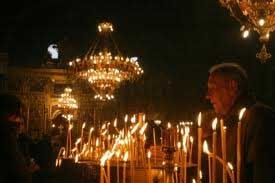 OR we can go to Purgatory to get cleaned up for the beatific vision. St. Teresa of Avila exhorts us to (to paraphrase again) “DO IT NOW, DON’T WAIT”. OK, here are accurate quotes:
OR we can go to Purgatory to get cleaned up for the beatific vision. St. Teresa of Avila exhorts us to (to paraphrase again) “DO IT NOW, DON’T WAIT”. OK, here are accurate quotes:
FROM HOLY SCRIPTURE
There are clear references to Purgatory in both the the Old and the New Testaments. In the Old Testament in 2 Machabees X11 43,46 the Jewish practice of praying for the dead is clearly set out it the following words – ‘It is therefore a holy and wholesome thought to pray for the dead that they may he loosed from their sins.
In the New Testament Our Blessed Lord in Matthew V 26 refers to the prison from which no one is released before his debts are repaid to the last farthing. St. Paul in Cor. 1,3 15 mentions that there are souls who can only be saved ‘yet so as by fire’. It is also stated in Apocalypse XXI, 27 in reference to heaven – ‘There shall in no way enter into it anything defiled”. St. Augustine says that these words clearly indicate that there must be forgiveness of some sins in the world to come, which cannot be in heaven as nothing defiled shall enter therein. Therefore Our Blessed Lord is clearly referring to a place which is neither heaven nor hell and which we call Purgatory.
The learned Protestant, Dr. Jeremy Taylor, writes thus about this matter. ‘We find by the history of the Machabees, that the Jews did pray and make offerings for the dead which appears by other testimonies, and by their form of prayer, still extant, which they used in the captivity. Now it is very considerable that since Our Blessed Saviour did reprove all the evil doctrines of the Scribes and Pharisees, and did argue concerning the dead and the resurrection, yet he spoke no word against this 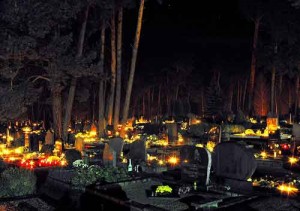 public practice but left it as he found it which he who came to declare to us all the will of His Father, would not have done, if it had not been innocent, pious and full of charity. The practice of it was at first, and was universal; it being plain in TertulIian and St. Cyprian.”
public practice but left it as he found it which he who came to declare to us all the will of His Father, would not have done, if it had not been innocent, pious and full of charity. The practice of it was at first, and was universal; it being plain in TertulIian and St. Cyprian.”
FROM THE FATHERS OF THE CHURCH
“We pray for all among us who are departed believing that this will be the greatest relief for them while the holy and tremendous victim lies present ” – St. Cyril Of Jerusalem
“We make yearly offerings for the dead” – Tertullian
“….. by long punishment for sin to be cleansed a long time by fire and to have purges away all sin by suffering” – St. Cyprian.
‘That you purify me in this life and render me such that 1 may not stand in need of that purging fire” – St. Augustine.
‘No day shall pass you over in silence, no prayer of mine shall ever be closed without remembering you. No night shall pass you over without some vows of my supplications. You shall have share in all my sacrifices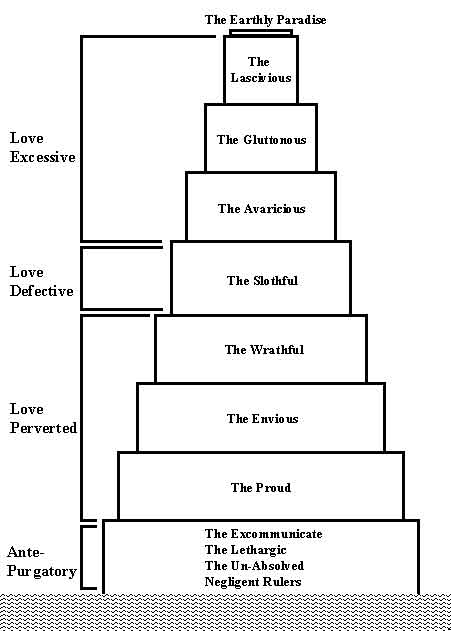 . If I forget you (now that you are dead) let my own right hand be forgotten” – St. Ambrose.
. If I forget you (now that you are dead) let my own right hand be forgotten” – St. Ambrose.
St. Chrysostom in his eighth homily on the Phillipians says that to pray for the faithful departed in the Mass was decreed by the Apostles themselves.
St. Clement of Alexandria says that by punishment after death men must expiate every least sin before they can enter heaven.
Origen in many places and Lactantius teach at large that all souls are purged by the punishment of fire before they enter heaven unless they are so pure as not to stand in need of it.
St. Epiphanius, St. Ephrem, St. Athanasius, Eusebius, St. Paulinus all teach the same.
FROM THE GREAT SAINTS
“No tongue can express, no mind can understand, how dreadful is Purgatory…And be assured that the souls have to pay what they owe even to the last farthing. This is God’s decree to satisfy the demands of justice” –St. Catherine of Genoa.
“Purgatory fire will be more intolerable than all the torments that can be felt or conceived in this life” – Venerable Bede.
“A person may say, I am not much concerned how long I remain in Purgatory, provided I may come to eternal life. Let no one reason thus. Purgatory fire will more dreadful than whatever torment can be seen, imagined or endured in this world.” – St. Caesarius of Arles.
‘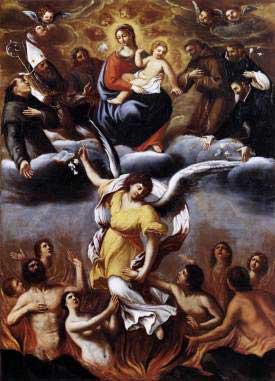 The same fire torments the damned in hell and the just in Purgatory. The least pain in Purgatory exceeds the greatest in this life.” – St. Thomas Aquinas.
The same fire torments the damned in hell and the just in Purgatory. The least pain in Purgatory exceeds the greatest in this life.” – St. Thomas Aquinas.
“My God, what soul would be sufficiently just to enter heaven without passing through the avenging flames’ – St. Teresa of Avila.
‘If we were thoroughly convinced of the torments of Purgatory, could we then so easily forget our parents……. if God would permit them to show themselves we would we would see them cast themselves down at our feet “My children”, they would cry out, “have mercy on us! Oh, do not forsake us!’. – St. John Vianney.
FROM PRIVATE REVELATION
“When I was praying before the Blessed Sacrament on the Feast of Corpus Christi a person enveloped in fire suddenly stood before me. From the pitiable state the soul was in I knew it was in Purgatory and I wept bitterly” – St. Margaret Mary Alacoque.
At FATIMA in 1917 Our Blessed Lady appeared to three children – Lucy, Jacinta and Francesco. The series of appearances by Our Lady to these three children is approved by the Church. Shortly before they took place a young girl from the village had died. She was about fourteen years old. The children asked Our Blessed Mother whether or not she had been saved. The Blessed Virgin advised them that indeed she had been saved but that she would be in Purgatory until the end of the world. (As a result of this revelation many prayers were offered up for her soul and we can only pray that because of this her souls has now been released into eternal glory). From this most authoritative account we can learn three things:
(i) the reality of Purgatory
(ii) great length of time many souls have to stay there
(iii) the tremendous importance of praying for the souls of the departed
Here's some more places you can go if you are still having trouble....
![]() The Burning Truth about Purgatory
The Burning Truth about Purgatory
![]() How to Explain Purgatory to Protestants (James Akin)
How to Explain Purgatory to Protestants (James Akin)
![]() The Roots of Purgatory
The Roots of Purgatory
![]() Purgatory
Purgatory
Tags: baltimore catechism, catechism of the catholic church, catholic, catholic podcast, catholic prayer, cathollc spirituality, Church, Deacon James Keating, doctrine of faith, First Stop, heaven, mystics, poor souls, prayer, purgatory
This entry was posted on Wednesday, November 2nd, 2011 at 12:45 am
You can follow any responses to this entry through the RSS 2.0 feed.
During his Angelus on Tuesday, Pope Benedict said “the Feast of All Saints is a good time to lift our gaze from the realities of the world… to the enormity of God, who encompasses all eternity and holiness. “
He said holiness is the vocation of all the baptized, and all the people of God are called to be saints.
The Pope then turned his thoughts to Wednesday’s commemoration of All Souls
[powerpress = “Vatican Radio”]
“From the early days of the Christian faith,†he said, “the Church on earth, recognizing the communion of the whole mystical body of Jesus Christ, has with great respect honored the memory of the dead and offered prayers for them.â€The Pope said “our prayers for the dead are not only useful, but necessary.â€
The Holy Father reminded the faithful to keep the bonds of affection with our loved ones who have died, not only through prayer, but also through actions like visiting cemeteries.
He said this reminds us all that we are meant for another life after death.
see more on the website for Vatican Radio
Tags: all saints, catholic, catholic podcast, catholic prayer, cathollc spirituality, pope benedict xvi, prayer, purgatory, vatican radio
This entry was posted on Tuesday, November 1st, 2011 at 2:42 pm
You can follow any responses to this entry through the RSS 2.0 feed.
Episode 1 -Communion with Christ – Practical Prayer –The most powerful principal of prayer is that God desires us.  Prayer is a response to a presence who has entered our reality. Distractions, an enemy of prayer. Recovering the prophetic consciousness.  The highest fruit of prayer to be someone who is so transparent to God, that  God reveals His acts in our lives…the person has become prayer.
Prayer is a response to a presence who has entered our reality. Distractions, an enemy of prayer. Recovering the prophetic consciousness.  The highest fruit of prayer to be someone who is so transparent to God, that  God reveals His acts in our lives…the person has become prayer.
[powerpress]
Deacon James Keating, PhD, the director of Theological Formation for the Institute for Priestly Formation, located at Creighton University, in Omaha.
 From the Catechism of the Catholic Church paragraph 2567
From the Catechism of the Catholic Church paragraph 2567
God calls man first. Man may forget his Creator or hide far from his face; he may run after idols or accuse the deity of having abandoned him; yet the living and true God tirelessly calls each person to that mysterious encounter known as prayer. In prayer, the faithful God’s initiative of love always comes first; our own first step is always a response. As God gradually reveals himself and reveals man to himself, prayer appears as a reciprocal call, a covenant drama. Through words and actions, this drama engages the heart. It unfolds throughout the whole history of salvation.
For more information on the “Institute of Priestly Formation†and for other material available by Deacon Keating, just click here
Don’t forget to pickup a copy of “Communion with Christ†, it is one of the best audio sets on prayer…ever!
Check out Deacon Keating’s “Discerning Heart†page
Tags: catechism of the catholic church, catholic, catholic podcast, catholic prayer, cathollc spirituality, Deacon James Keating, Deacon Keating, institute for priestly formation, james keating, old testament, prayer, prophet, theological formation
This entry was posted on Thursday, October 27th, 2011 at 7:18 am
You can follow any responses to this entry through the RSS 2.0 feed.


